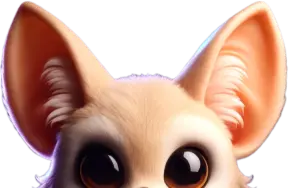Animal Life Cycle
About Animal Life Cycle
The animal life cycle is a fascinating series of growth and developmental stages that an animal undergoes from birth to adulthood. These cycles are integral to the survival and reproduction of species, offering insights into their evolution and adaptation.
Studying animal life cycles is important as it helps scientists and educators understand how animals interact with their environment and adapt to changing conditions. It also provides valuable educational experiences, especially for students, in understanding the complexities of life science.
Stages of Animal Life Cycles
An animal life cycle broadly consists of various stages: birth, growth, reproduction, and death. Within these stages, different animals may have unique paths. Let's explore specific examples from different animal classes:
- Mammals: Mammals, including elephants, have live births, followed by a period of dependency and growth as they mature.
- Birds: Birds like chickens hatch from eggs and experience stages from chick to adult.
- Reptiles: Reptiles such as crocodiles also hatch from eggs, continuing through distinct juvenile and adult phases.
- Amphibians: Amphibians, like frogs, undergo metamorphosis, transforming from aquatic larvae to terrestrial adults.
- Insects: Insects such as butterflies and dragonflies experience a complete metamorphosis with stages like larval, pupal, and adult.
Detailed Life Cycles of Specific Animals
Penguin Life Cycle
Penguins begin their life cycles in eggs incubated by one of the parents. After hatching, chicks grow through juvenile stages before becoming independent adults.
Crocodile Life Cycle
The crocodile life cycle starts with eggs laid in nests. Hatchlings are cared for by their mothers until they can fend for themselves and reach maturity.
Praying Mantis Life Cycle
The praying mantis life cycle includes stages from egg to nymph to adult, with transformative molting processes in between.
Butterfly Life Cycle
The butterfly life cycle includes stages of growth from a tiny egg to a caterpillar, followed by pupation in a chrysalis, and finally emerging as a butterfly.
Frog Life Cycle
In frogs, the life cycle progresses from eggs to tadpoles, which then undergo metamorphosis into adult frogs.
Salmon Life Cycle
Salmon experience a life cycle that starts in freshwater, moves to marine environments, and ultimately returns to freshwater for spawning.
Elephant Life Cycle
The elephant life cycle is characterized by long gestation periods followed by extensive parental care as calves grow into powerful mammals.
Chicken Life Cycle
Chickens hatch from eggs, grow through stages as chicks, and mature into adult hens or roosters.
Dragonfly Life Cycle
The dragonfly life cycle begins with eggs laid in water, hatching into aquatic larvae, and ending with metamorphosis into aerial adults.
Bee Life Cycle
Bees undergo complete metamorphosis from egg to larva to pupa, emerging as adult bees ready to serve the colony.
Ladybug Life Cycle
The life cycle of a ladybug sees it transform from an egg into larva, then pupa, and finally emerging as a distinctively patterned adult.
Octopus Life Cycle
Octopuses start life as tiny eggs that hatch into larvae, which grow into impressive creatures with advanced adaptive abilities.
Turtle Life Cycle
In turtles, the life cycle begins with eggs laid on beaches, hatching into juveniles that return to the sea and eventually mature into solitary adults.
Grasshopper Life Cycle
The grasshopper life cycle involves simple metamorphosis from an egg to a nymph, maturing into a full-grown insect.
Fish Life Cycle
Fish life cycles often start with eggs laid in various aquatic environments, undergoing juvenile stages until reaching maturity.
Crab Life Cycle
Crabs' life cycles include egg, larval, juvenile, and adult stages, often involving dramatic habitat changes.
Jellyfish Life Cycle
The jellyfish life cycle is cyclical, involving stages of development from polyps to medusae.
Life Cycle Diagrams
Diagrams are crucial for understanding life cycles as they visually represent each stage of an animal's growth and development. Interactive diagrams can enhance learning by allowing students to engage with life cycle stages in an accessible way.
Worksheets and Resources
Printable worksheets provide a practical way for students to explore different life cycles. Online resources such as life science games and science activities can further complement learning by offering interactive experiences.
What are the Stages of a Plant Life Cycle?
Plant life cycles differ from those of animals but also involve successive stages of growth, such as germination, flowering, and seed production. Comparing plant and animal life cycles can provide insights into different life processes.
Environmental Factors Affecting Life Cycles
Environmental conditions play a significant role in influencing animal life cycles. Factors such as climate, availability of resources, and habitat can affect developmental stages and timings.
FAQs
What stages are present in all animal life cycles?
Most animal life cycles involve stages such as birth, growth, reproduction, and death, but the specifics can vary among species.
Are life cycles the same for all animals?
No, life cycles differ among animals, especially between classes such as mammals, birds, reptiles, amphibians, and insects.
Resources for Teachers
Teachers can access various science practice materials to help students understand life cycles. Printable exercises and labeling games can be great tools for classroom use, providing an engaging way to explore concepts.
